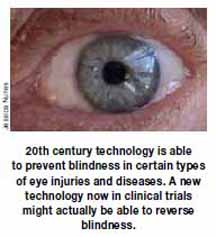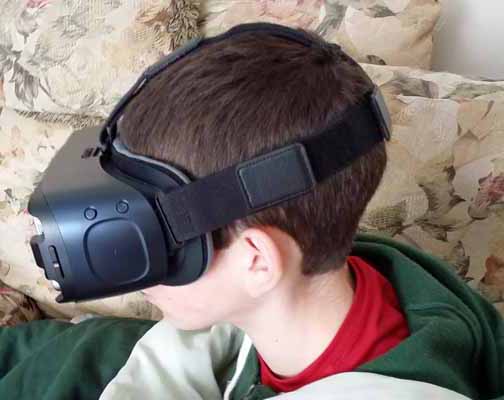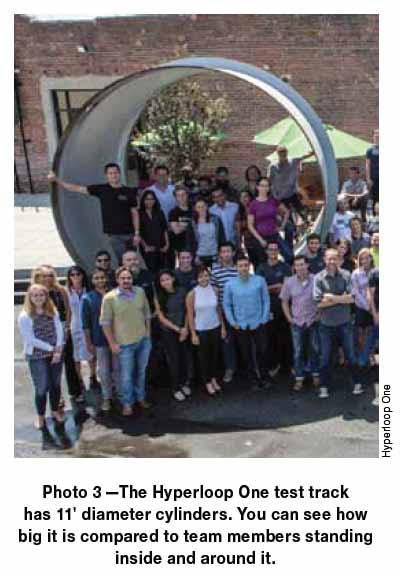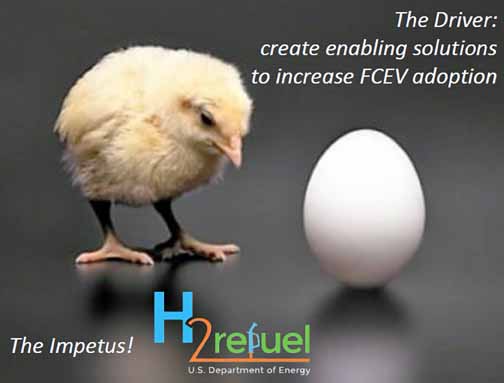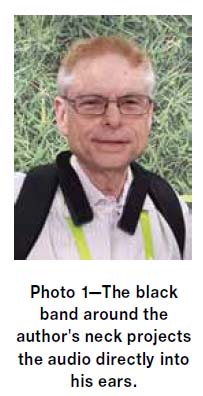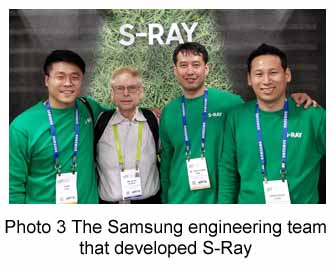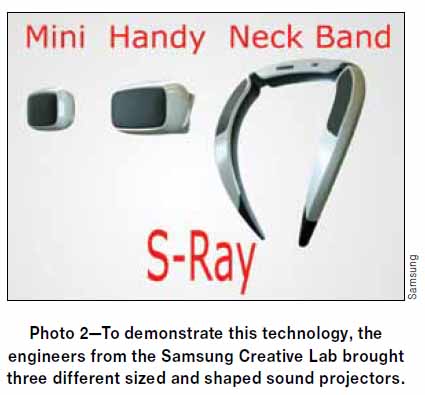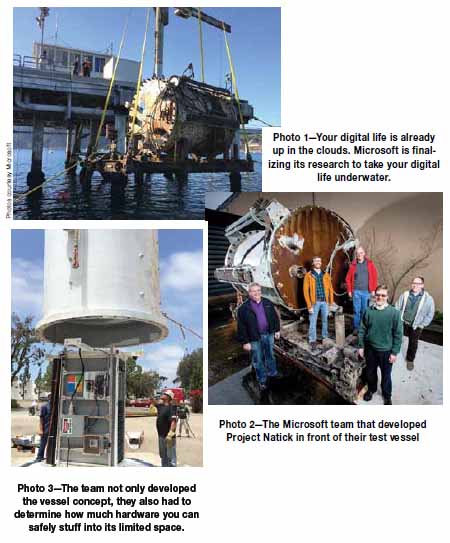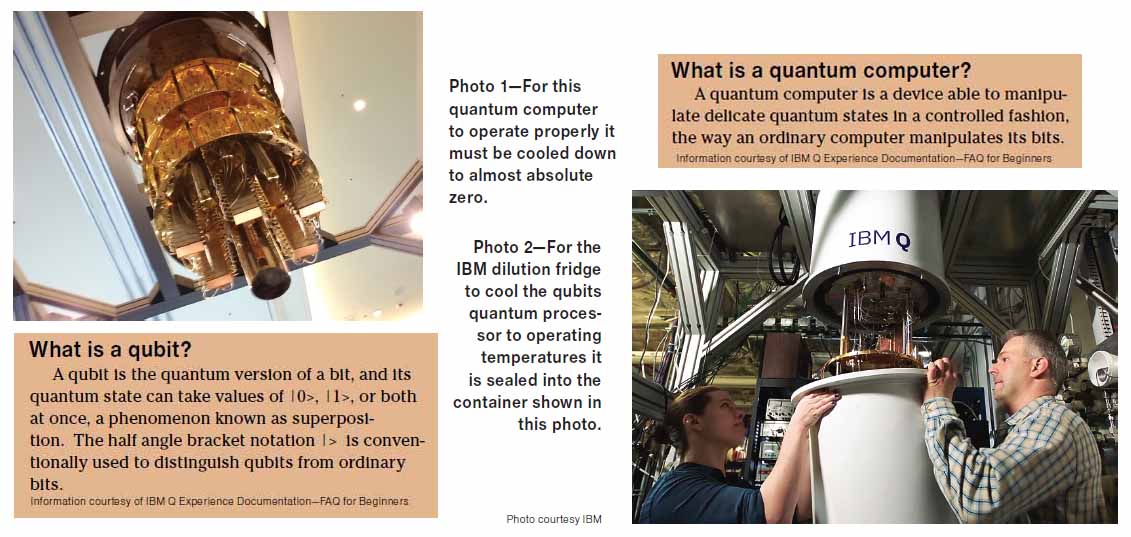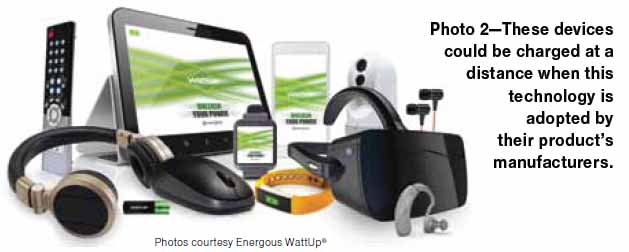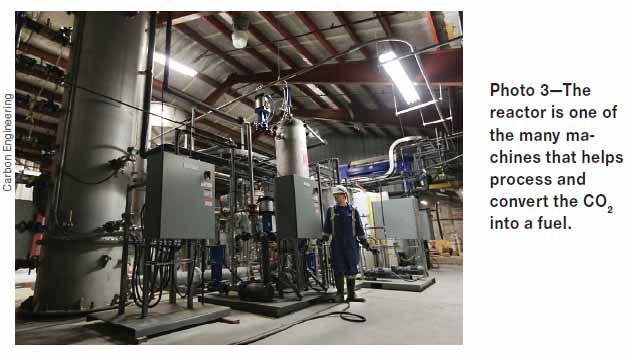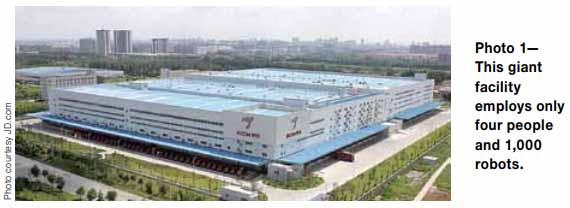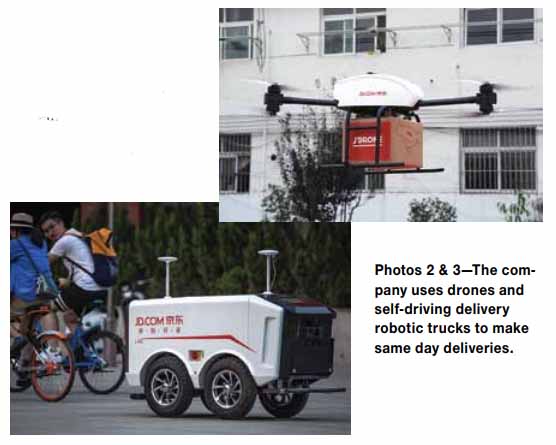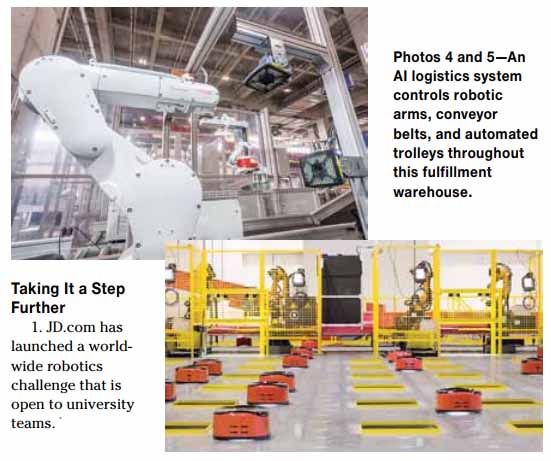Japan to Build an Orbiting Electricity-Generating Station
If we could effectively harness the energy from the sun, we could meet all of our energy needs without ever burning another drop of oil or coal. The technology that Japan is developing could change our world. The full story is as mind boggling as these photos. Click 4 Full Story
August Magazine Cover Story
The full story is as mind boggling as these photos.
Click 4
Full Story
Harnessing the Wind When There Is No Wind
Imagine wind turbines that work even when the air is still.
Until we can beam electricity down from Earth satellites, we need to find other environmentally friendly electricity generating alternatives as soon as possible. The problem with wind generation is that it doesn’t work when the air is still. The two wind technologies that are described in this month’s column can generate electricity even when the air is still.
It is difficult staying ahead of counterfeiters because the equipment needed to produce security tagging keeps dropping in price. This month’s column describes the newest security tagging systems. The first one is infinitesimally small barcodes that are only as long as a human hair is wide. Photo 1 is an exaggeration because without super magnification they are invisible.
The second new anti-counterfeiting system is an invisible watermark designer label that shows up when it is hit with warm moist air. Imagine because of this new technology you can huff and puff and blow the counterfeiters dream of stealing your money away.
Foiling the Counterfeiters
Foiling the Counterfeiters
For the hydrogen economy to blossom we need reasonably cheap Hydrogen production, storage, and also inexpensive fuel cells. A fuel cell can, on the fly, convert hydrogen into electricity which can now power almost everything that now requires a fossil fuel.
Stanford University laboratory breakthroughs in hydrogen production and inexpensive fuel cell manufacturing are here and this column describes them.
Hydrogen: The Ultimate 21st-Century Fuel
Hydrogen Economy Breakthroughs
By Alan J. Pierce EdD
Just like the ancient Greeks and Romans did centuries ago modern architects are now pushing beyond what seems possible. In Dubai, an Emirate of the United Arab Emirates, the Water Discus Hotel will have guest rooms located 33 feet below the surface of the water. In Shanghai China the Shimao Wonderland Intercontinental Hotel will also have rooms underwater. Even more extraordinary this amazing construction project shows that it is possible to turn an old abandoned rock quarry into a tourist paradise. The full story is only one click away.
Turning Architectural Dreams into Reality
Hotels Beyond the Imagination
The New Tappan Zee Bridge
This new Tappan Zee Bridge is just beginning to rise from the water of the Hudson River. This column describes the engineering and construction technologies being used to build this new bridge. These bridges will withstand the forces of nature that are now slowly ripping apart the 60 year old Tappan Zee bridge that it will soon replace.
To build a structurally sound bridge, this time, engineers needed to reach the bedrock which is 300 feet below the water and covered by hundreds of feet of silt. The new twin Bridges will have a dampening system that will allow them to withstand the motion of an earthquake if, perhaps when, the Ramapo seismic zone decides to give them a major shake. The full story is fascinating.
The New Tappan Zee Bridge
By Alan J. Pierce EdD
Sky-High Elevators Without Cables
Modern elevators are pulled up and lowered down by very strong cables. To design and build a mile high building you need to eliminate the current cable system because cables that long are to0 heavy.
ThyssenKrupp engineers decided to get rid of the cable that lifts and lowers an elevator in its shaft. To accomplish this task they adapted the magnetic levitation system that they had designed to levitate their Transrapid high speed Maglev monorail trains. They repurposed this maglev system so it could work in an elevator shaft. For the complete story click the link below.
By Alan J. Pierce EdD
By Alan J. Pierce EdD
pierceaj@techtoday.us
3D Printing is Getting Hot - CES 2015
At CES 2015 3D printing blossomed into its own Tech Zone. See photo 1. Could desktop 3D printing become the next breakaway consumer product?
I have no doubt the following is going to take place. The price of 3D printers will continue to fall and your tech savvy kids will continue to pester you for a 3D printer. By now most schools have requested a 3D printer for their science and technology programs.
From my experience using a 3D printer it is clear that any tech savvy 12 year could quickly start building 3D objects. Online there are thousands of free designs already available for download and free software to design your own projects. See photo 2. To get the full picture about 3D printers click the link below for my TechDirections magazine column.
My review of the XYZprinting line of 3D printers can shed some light on what you should be looking for when purchasing a machine. It includes 3 videos that I shot to provide a full picture of what these printers can do. See & click photo 3 for the review.
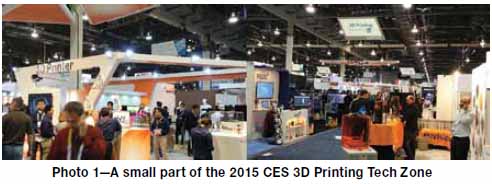
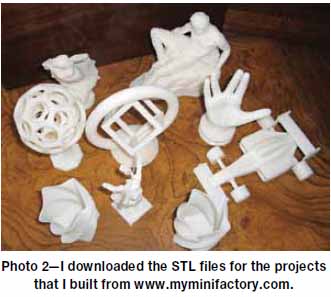
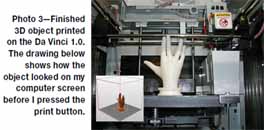
By Alan J. Pierce EdD
pierceaj@techtoday.us
The Hybrid Commercial Jet Plane
Hybrid cars are now very common. The question becomes how soon will hybrid technology be adopted for commercial airplanes? Engineers have already proven that the same benefits of hybrid car technology can be transformed so they can save fuel and maintenece costs on commercial airplanes. Before this technology can be fully adopted and find its way into the planes at your local airport they need to be fully tested.
The A320 ATRA (Advanced Technology
Research Aircraft), a DLR research
airplane (See Photo 1) is now performing the test. The goal is to prove it is safe, efficient, and
cost effective. If testing pans out and
broad adoption takes place, eventually
all new commercial jet planes could be categorized as hybrid vehicles. The full story is fascinating.
The Laser Automobile Ignition System
By Alan J. Pierce EdD
If we were to compare an automobile to a living organism, we might consider its spark plugs the source of energy that causes the heart of the engine to beat. The exploding air-gasoline mixture in the cylinders, which drives the car, can be compared to the pumping heart muscle that provides the energy needed for movement. Just as exercise can strengthen the heart of a living organism, a laser ignition plug that can simultaneously ignite the air-gas mixture in multiple locations would greatly improve the efficiency of the engine.
Takunori Taira and his associates at Japan’s National Institute of Natural Sciences, working with Toyota Motors, Nippon Sokem Inc., and the Denso Corporation, have successfully built a fully functional laser ignition system. Their laser ignition plug is shown in Photo 1 and the test engine that they built is shown in Photo 2. They demonstrated the world’s first gasoline engine micro laser ignition car in 2013.
Aviation Goes Hypersonic
Fly from New York City to London England in under an hour.
(4,562 Miles Per Hour)
The speed of sound is called Mach 1 and equals 761.2 miles per hour. The fastest plane ever flown so far is the Lockheed Martin SR-71 Blackbird spy plane. It flew at Mach 3.5. The “Son of Blackbird is now under construction and it will fly at hypersonic speeds of Mach 6. This plane will have the same turbo-jet engine that powered the SR-7 and a ramjet engine to push propulsion up to Mach 6.
At Mach 6 the SR-72 will cover one mile of ground per second of flight time. This is an amazing story of the future of flight and the full story is just one click away.
By Alan J. Pierce EdD
At the Henn-na Hotel, if you want to be checked in by a robot you go to line 1, by an almost human you go to line 2, or by an alligator you go to line 3. (See Photo 1.) This is the only hotel in the world fully staffed by robots and it is letting guests get a real peek at what an almost-human-intelligence robotic world might look like some day.
This hotel is located just outside the Huis Ten Bosch Amusement Park in Nagasaki, Japan. All the robotic systems of the hotel were created in Japan by the University of Tokyo, Institute of Industrial Science, and the Kajima Corporation.
A Hotel Staffed by Robots
A Hotel Staffed by Robots
By Alan J. Pierce EdD
pierceaj@techtoday.us
By Alan J. Pierce EdD
Smart Kapp IQ—Local and Long Distance Collaboration Jan 2016
The SMART kapp iQ is actually two different smartboards that share a ultra high definition LED display. In the Display mode (Photo 1), it harnesses the power of your computer and your Wi-Fi network for presentations.
In the IQ mode (Photo 2), the display harnesses the power of your smartphone or tablet through a Bluetooth connection to let you collaborate with up to 250 people locally or internationally. In this mode, you have real-time whiteboard multi-way collaboration not possible in the other mode. With the touch of your finger, you can switch from one mode to the other to harness the capabilities of both modes in your classroom.
Yesterday’s Science Fiction—Today’s Medical Breakthrough Feb. 2016
By Alan J. Pierce EdD
The movie prop that was attached to Luke Skywalker’s body, after his arm was cut off by Darth Vader in the Star Wars movie The Empire Strikes Back, was pure fiction when that movie was released back in 1980. What was once bioengineering fiction is today’s medical breakthrough.
The DEKA Luke Arm (Photo 1) is FDA (U.S. Food and Drug Administration) approved. What makes this prosthetic so amazing is that its physical movements are controlled by its wearer’s mind, just like in the movie.
Once a Prop From Star Wars is Now
FDA Approved
Reproduced with the permission of DEKA
Research & Development Corp.
NASA’s Innovative Advances Concept Program funded research to develop a spacesuit that could deliver some form of gravity directly to the person wearing it. The idea is if you can’t bring gravity to the spaceship, perhaps you can bring the allusion of gravity to the astronaut. Sounds impossible, but collaborative efforts by engineers and technologists at Draper Laboratory Inc., MIT, and the David Clark Company have actually developed a spacesuit system that can provide an astronaut’s muscles and bones a simulated gravity.
A Space Suit
That Simulates Gravity
A Space Suit That Simulates Gravity March 2016
By Alan J. Pierce EdD
CES 2016 – 360° HD Panoramic Surround Videography
360° Video Stitching Cameras CES2016 April 2016
By Alan J. Pierce EdD
New cameras with lots of separate lenses are now being introduced. The software on these cameras seamlessly stitch all of the video that each lens captures together to create a new type of viewing experience.
When you view these videos on an iPad, the tablet becomes a movable window. When you move the iPad up, down, left, or right, your view of the video seamlessly changes to match your orientation of the tablet. You can actually even turn the tablet to see what is behind you. With a VR headset you can go from 2D to 3D viewing.
Flying into Outer Space on Reusable Rockets May/June 2016
For space flight to become as common place as air travel, rocket ships need to become as reusable as airplanes. SpaceX and Blue Origin are now in a space race that is similar to the 1960’s US versus USSR (Russia) race to the moon. Both SpaceX and Blue Origin are developing reusable rockets that can use their engines to perform a controlled descent to a vertical landing at the same location that they originally blasted off into space.
The Founders of these companies have the same goal which is to develop a rocket system that is as reliable and reusabile as an airplane. Billionaire Elon Musk is the founder of Tesla Motors and SpaceX and billionaire Jeff Bezos is the founder of Amazon.com and Blue Origin.
FDA Approved Clinical Trial to Reverse Blindness Aug. 2016
Scientists, doctors, and technologists working in a relatively new area of biotechnology, called optogenetics, have successfully reversed some forms of blindness in animals. If the first FDA approved clinical trial of this optogenetics surgery stays on schedule, 15 blind patients might soon be able to see again.
Time will tell if this surgery can partially restore some of the sight these participants lost to a disease called retinitis pigmentosa. The people who will be participating in this trial are all totally blind and have been this way for quite a long time.
This column describes the original Stanford University breakthrough and how the technology is being used to medically reverse blindness. If the surgery is successful the patients will be able to see again; just not all of the colors of a rainbow. The step from animal testing to human trials is a major step forward and only possible because of how successful and safe it was in animals.
A Technology that Might Partially Cure Blindness
Using Technology to Kill Mosquitos Sept. 2016
The FDA has just approved the use of genetically modified mosquitos to stop Zika
Scientists have found a way of stopping Zika, Malaria, and other disease carrying mosquitos by altering their DNA. With funding from the Gates Foundation Imperial College London has founded the Target Malaria Research Consortium to start releasing the Genetically Modified (GM) mosquitos that they have developed. They now have the approval of three African Governments and the FDA has also recently approved their genetic modification approach for use here in the US to fight Zika.
Their GM modified mosquitos can end these diseases by flying around and having sex with as many wild female mosquitos that they can find. How this DNA modification will affect wild mosquito populations makes for some fantastic reading.
The Convergence of Digital and Non-Digital Technologies Oct. 2016
This convergence is a universal phenomenon
Examples: implanted medical devices, "Lights Out Manufacturing", and robotic surgery
Companies that build products that can communicate through the Internet are finding ways of giving digital devices the power to control digital and non-digital technologies. The person in control can be local or thousands of miles away using their smartphones, tablets, and/or computers. These tasks can be as simple as locking a tool or as complex as performing robotic surgery.
Black & Decker's smartphone app controls their new Smartech™ batteries and this lets you control their line of MAX®20 volt products with your smartphone. After you download the Black & Decker app from the Google or Apple online store you can use your smartphone to lock, monitor, or when you are within Bluetooth range locate the tool that the battery powers.
Destination Mars (Published November 2016 in TechDirections Magazine)
The “World’s first crew to Mars is likely in middle school right now.”
By Alan J. Pierce EdD
Krista Alestock sent me a press release describing a Lockheed Martin contest that many teachers will want to enter. This contest has large cash prizes.
The Lockheed Martin Generation Beyond STEM Initiative, described in her press release, includes a challenge to create a very short video of a student designed “habitation module for the first crew to Mars".
Lockheed Martin is the company that is building the Orion spacecraft that will eventually land astronauts on Mars. This column provides links to the contest and also describes the hardware and how soon NASA robots and astronauts will finally start to venture beyond the moon.
This is a fascinating story and a contest that teachers will want to know about. Please forward to all teachers you feel will be interested in this subject.
By Alan J. Pierce EdD
This new joining process is called gluing rather than soldering because it is applied without heat. To join two surfaces together both surfaces are coated with a microscopic metallic layer of different nanorod formulations. Pressing them together changes these nanorods from a solid to a liquid and back into a solid again.
The Video describes the basics of the process and the column gives you a full understanding as to why this process could change manufacturing.
Nano-Metallic Gluing (Published December 2016 in TechDirections Magazine)
Copyright © 1996 - 2020 Dr. Alan J. Pierce
You are however, welcome to print material from this website for use in your classroom.
Click to read over 200 other stories on new & emerging technologies.
Walabot is a new product that works with your smartphone and lets you see the plumbing and wiring that is hidden inside your walls. It works with a Walabot free app.
Wallabot emits radio waves into your concrete or dry wall. It has multiple antennas to receive the information that bounces back from the objects that it finds in your wall. The technology behind this device is already being used by the military, homeland security, and in new medical devices. This column describes it all.
Walabot Can See Into Walls (Published January 2017 in TechDirections Magazine)
Improving Surgery with 3D Printed Practice Organs
Some Bleed When Cut
(Published February 2017 in TechDirections Magazine)
Part 1
Separation of Conjoined Twins with the Help of a 3D Printer
This past June, in Gainesville Florida, two conjoined twins were separated after many practice planning sessions that used 3D printed organs that were created using 3D body scans of these babys' hearts.
Part 2
3D Printed Almost Human Organs -that Bleed
Doctors who are learning their craft are beginning to practice surgery using almost human 3D printed organs that will bleed fake blood when they are cut. These organs contain built in defects or cancers that must be surgically fixed or removed.
Recent Material Science Breakthoughs
(Published March 2017 in TechDirections Magazine)
Beta Titanium-3 gold
A new alloy breakthrough has Gold increasing the hardness of titanium rather than titanium increasing the hardness of gold. Dr. Morosan and her team at Rice University created it.
Foam Graphene
Researchers at MIT, using a similar approach, created Foam Graphene which is 10 times stronger and10 times lighter than steel. How these researchers did their magic and the possible future uses of what they created is fascinating. Click the "MIT News" image to watch a YouTube Video on foam graphene.
Breakthrough Results
These research breakthroughs have sparked a race to find new materials by doing what the researchers at Rice and MIT did to alter certain conditions during the fabrication process. Simple processing steps were changed which had a magical effect on their raw ingredients.
By Alan J. Pierce EdD
pierceaj@techtoday.us
The Augmented Reality Six Flags Ride
At a number of Six Flags amusement parks, new roller coaster experiences combine the normal physical G-forces of the ride in perfect synchronization with a virtual reality (VR) experience. The VR part of these rides are powered by Oculus and viewed during the ride on a Samsung VR headset. See photos.
Here the roller coaster provides the g-forces to your body at the same time a Gear VR headset provides a synchronized VR experience to your brain. To read the full story just click this link.
Samsung's SM-R323 Gear VR Headset
This review describes the features of the Samsung Gear SM-R323 VR headset and the virtual world that it lets you explore. It is almost identical to the VR headset that provides the synchronized virtual world experience at six flags. Will it provide you with the virtual world that you want to explore at home? To find out read the review.
A Virtual Reality Ride/Game with Real Jet Fighter G-Forces
(Published April 2017 in TechDirections Magazine)
Hyperloop - A New Transportation System
(Published May 2017 in TechDirections Magazine)
Five years ago Elon Musk proposed a new transportation system that could move people and freight at jet airplane speeds on the ground. Imagine traveling 600 miles an hour in perfect comfort just a few inches off the ground. When I first learned of his proposal it screamed write me up as a column, but I didn’t because it sounded so futuristic I expected it couldn’t be built this century.
Boy was I wrong! His hyperloop proposed transportation system has moved from concept to a number of prototype systems in just a few years. To turn his dream into a reality Elon Musk first created the type of document needed to create a patent and then left it as open source so anyone could turn it into a commercially viable system. He also provided contests to get university students involved.
Hyperloop One, co- founded by a past SpaceX engineer, is now completing construction of a test track in Nevada that can fit a full size pod that one day could carry passengers or freight. Musk also built a SpaceX hyperloop test track in Hawthorne California for university pod vehicle competitions.
This column describes how a Hyperloop system will be able to move people in perfect comfort at 600 miles per hour on the ground. It is mind blowing technology.
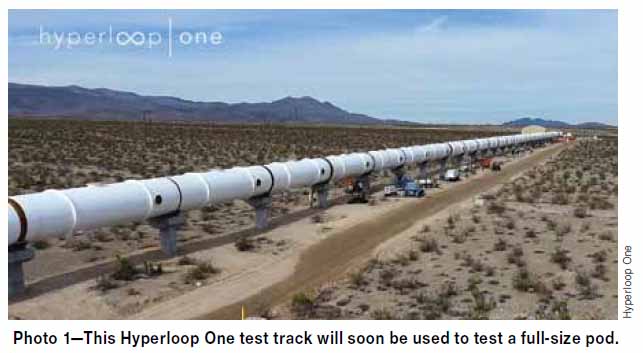
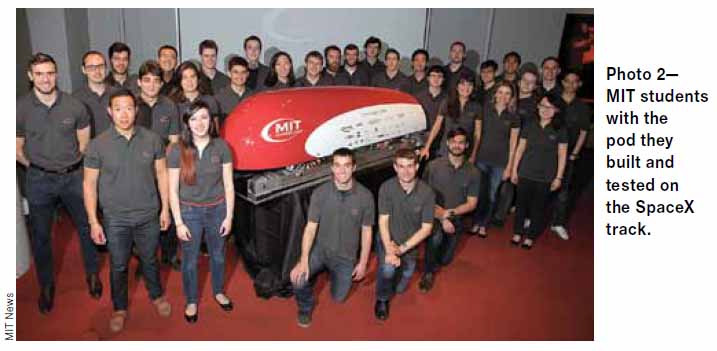
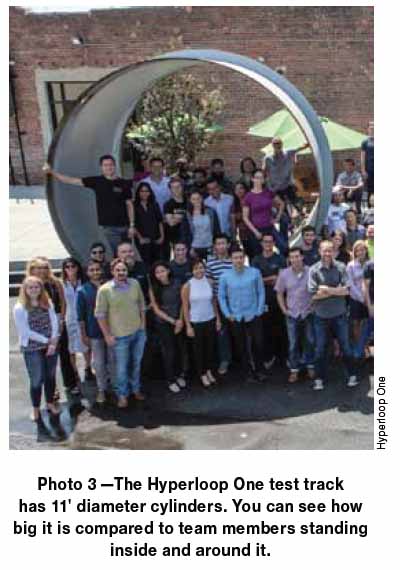
Elon Musk’s Boring Company
(Published September 2017 in TechDirections Magazine)
Some of Elon Musk’s projects seemed impossible when he first proposed them, but none of his ideas have ever been boring. His Boring Company is a play on words where the name of the company sums up what this company will do; that is bore tunnels to move new transportation systems underground.
It is no accident that Godit, the new boring machine that his engineering teams have created (see photo 3 and 4), actually bore tunnels that are the exact size needed for the hyperloop’s giant tubes. You need more information on Hyperloop just click the crowd in a tube photo which appeared as photo 3 in the Hyperloop story..
Godit Can Dig it!!!
The Home Hydrogen Car Refueling Station
The DOE Refueling H-Prize Competition - Has Led to a new Technology Breakthrough
(Published October 2017 in TechDirections Magazine)
The Conundrum:
People won't purchase Hydrogen powered cars until they have lots of places to fill their fuel tanks. Definitely a conundrum that parallels the old phrase “which came first the chicken or the egg". Basically car manufacturers can’t put thousands of Hydrogen cars on the road before they have places to fill up their tanks and gas station owners can’t afford to spend millions in hydrogen gas pump infrastructure before they have potential customers.
Hydrogen in my Gas Tank
The Solution:
The US DOE H-Prize was designed to
challenge engineering teams to create a
new hydrogen generating appliance which
would safely generate hydrogen in people’s homes. This column provides the full story!
New NYC Interactive Art Landmark
Climb 2,500 Steps to Breathtaking Views
(Published November 2017 in TechDirections Magazine)
By Alan J. Pierce EdD
pierceaj@techtoday.us
Staircases Only Go Up and Down
The Only Destination is the View
Hudson Yards is a 20 billion mega construction project that is now under construction in NYC. At the center of this 21st century mini city, in an open to the public 5 acre park like setting, they are now building the structure shown in photo 2.
It is not a building and has no stores. It is an observation tower that will become a NYC landmark for tourists and New Yorkers to visit. Vessel is designed as interactive art for people to climb. Since Vessel has no floors to anchor its staircases, it is a unique construction project.
Vessel has been designed so it will look like it defies gravity. It will have a relatively small footprint at its foundation. From this base diameter each level spirals a little further out as its staircases and landings climb 16 stories into the air. For the full story with video links just click below for the TechDirections PDF.
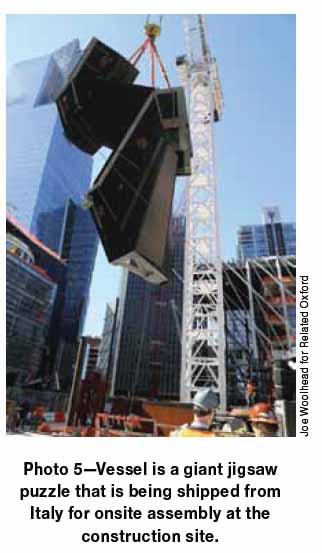

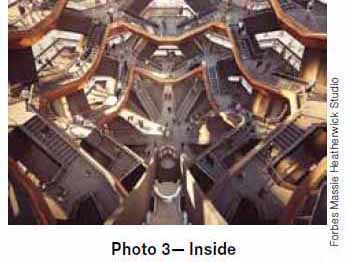
The Aerospike Engine
Aeronautical engineers have spent 67 years trying to perfect this technology
(Published December 2017 in TechDirections Magazine)
Aerospike is the world’s first
SSTO (Single Stage To Orbit) rocket
The Aerospike SSTO rocket engine, see photos, is a major breakthrough for the future of space travel. It can perform at sea level just as efficiently as it could perform in space on a trip to the moon or Mars.
Many technological breakthroughs only come after repeated laboratory or prototype failures. Seventeen Years ago NASA released a fact sheet about a new type of rocket engine they were trying to develop with Lockheed Martin, which could eliminate the need to use booster rockets to launch satellites and people into space. This engine concept that they then hoped to perfect was first proposed back in the 1960s by Rocketdyne, then a division of Boeing.
Instead of confining the exhaust gases by a conventional bell shaped nozzle an aerospike uses the changing air pressure of our atmosphere, from the ground to space, to partially control the shape of the expanding gases that push the rocket forward.
Column Links to 3 YouTube Videos - You need to see them all
By Alan J. Pierce EdD
pierceaj@techtoday.us
The Biological Supercapacitor
A power Source That Never Needs to be Replaced
(Published January 2018 in TechDirections Magazine)
The Biological
Supercapacitor
The biological supercapacitor is a new material science breakthrough of a biologically friendly electrical energy storage device. It is completely made up of materials that are biologically compatible with our internal chemistry. This device is recharged by the animal or human body’s biological fluids and physical movements. Scientists at UCLA and the University of Connecticut worked together to develop this new biological supercapacitor. Their research was funded by the National Science Foundation and other bioengineering and health institutes.
They built their supercapacitor using layers of graphene and human proteins so their device contains no ingredients which are not biologically compatible with the human body. It is the inclusion of human proteins that makes their supercapacitor a biological device.
By Alan J. Pierce EdD
pierceaj@techtoday.us
Three Dimensional Transformers
This technology
is equally successful at transforming the
outer form of a material regardless of its size.
(Published February 2018 in TechDirections Magazine)
Professor Katia Bertoldi and her team of researchers at Harvard University’s School of Engineering and Applied Science (SEAS) have recently developed a mathematical transformational technology that completely automates finding the best way to form a flat material into a form that can be shape shifted to perform a number of different functions.
Using this technology a designer or engineer would provide all the size and shape parameters that needs to be achieved when the object transforms from one shape into another. The program quickly finds all the possible solutions and then selects the solution that conforms to the parameters of size and shape that the researchers want as an output.
Hypothetically using this technology you could create a habitat for astronauts that folds down flat to be transported on a flight to Mars. It can also be used to create a medical device that is so small it could be fed into the human body through veins, arteries, or the smallest of incisions.
3 DimensionalTransformers
By Alan J. Pierce EdD
pierceaj@techtoday.us
Samsung’s Sound-Ray
Demonstrated at CES 2018
(Published March 2018 in TechDirections Magazine)
Samsung’s S-Wave focuses sound waves into a directional wave that can be projected as if the sound was a focused narrow beam of light. The light beam is a tool to help you understand how the sound is focused into a directional beam. Their directional sound beam, which is totally invisible, can only be heard if you are located in a physical sweet spot aligned with the beam of sound.
What is Samsung's S-Ray?
To request a free Newsletter
just email us at:
subscribe@technologytoday.us
Cloud Storage is Going
Underwater
Microsoft's is taking data storage out of the clouds and bringing it underwater!
Today most of us have our digital life (work done on computers and smartphones) stored or backed-up in the clouds. These clouds are warehouse size computer datacenters that are usually located in low rent areas with access to cheaper electricity and a very fast connection to the Internet. Indirectly they provide service to you since your digital life ends up on their servers from Microsoft, Google, or Apple when you backup your computer and smartphone. Just in case you feel none of your data is in the cloud, because you backup everything locally, all financial institutions and the US government all use off-site secure cloud storage. For the full story just click the link for a pdf of the magazine column.
The judges of the World Changing Ideas Awards committee selected Project Natick as a 2017 finalist for their innovative approach to cloud storage.
To view a Youtube Microsoft Video on Natick: <https://www.youtube.com/watch?v=L2oJw1a_qEM>
Microsoft’s Project Natick
(Published April 2018 in TechDirections Magazine)
At CES 2018 IBM introduced their 50 Qubits Q which is their most powerful operational quantum computer. This machine, which is shown in photo 1, was more than just a prototype because on March 6, 2018 IBM announced that production of the IBM Q will soon begin and scientists will not have to wait for their university to purchase one to use it. When a quantum computer qubits chip has enough qubits to surpass the processing power, in every way, of a conventional supercomputer the dream of quantum superiority will be achieved. Links in this column will take you to appropriate places at IBM for beginners and also computer experts so all can fully engage with this new technology.
Many of the systems that are visible in photo 1 are part of a cryogenic cooling system that allows the computer’s processor to operate at near absolute zero temperatures (absolute zero equals minus 459.67 degrees Fahrenheit).
Quantum Computer Supremacy is just...
The IBM Q 50 Qubits Quantum Computer
Published May 2018 in TechDirections Magazine
A Low Battery for all the items shown in photo 2 could Soon Become aThing of the Past!
WattUp®—Charging from 15' without Wires or Pads
Published September 2018 in TechDirections Magazine
WattUp® by Energous is a new technology that will allow your devices to charge just by being in the same room as the transmitter. The WattUp charging-at-a-distance transmitter fills the area, where it is installed, with low power radio frequency (RF) waves. These RF waves are converted by a proprietary chipset into a low-voltage DC charging current. For this new technology to take off, the chipset shown in photo 1, or one with a similar design, must be installed inside the device it is going to charge. Until that happens the initial rollout will probably be done with special charging cases that have the tiny chipset shown in photo 1 built into the cases.
If manufacturers adopt this technology all the devices that have the tiny chipset shown in photo 1 will always be topping off their charge when they are in range of a transmitter; these transmitters could eventually find their way into every location where you now find free WiFi.
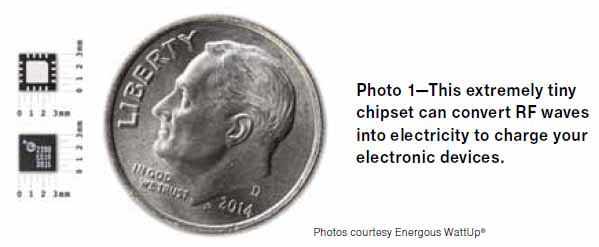
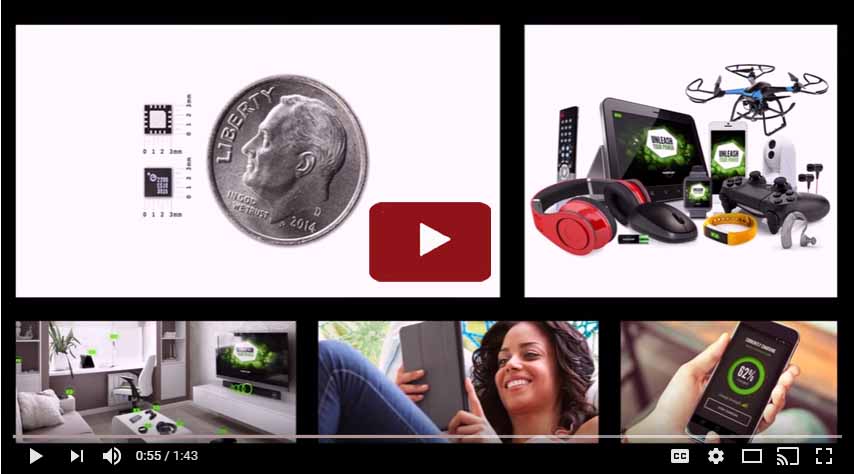

The Energous WattUP youtube video:
<https://www.youtube.com/watch?v=6INH8o6GLec>
A Way to Reverse Global Warming is No Longer a Dream
Converting CO2 from Our Atmosphere into Synthetic Fuels
The October 2018 "Technology Today" Column in TechDirections Magazine
Bill Gates is one of the private investors who has funded this entire project - Carbon Engineering has built a Factory which is now turning CO2 into synthetic fuels for cars, buses, and even airplanes.
The chart in photo 1 displays the percentage of the different greenhouse gases that entered our atmosphere in the US in 2016. To reverse global warming we need to physically start removing greenhouse gases, especially CO2, from our atmosphere.
This technology has been developed under the combined effort of engineering teams from Harvard University, Carnegie Mellon University, and the University of Calgary in Alberta Canada. The founders created Carbon Engineering to commercialize their process. Since the company was formed, Carbon Engineering has created an industrial life cycle for carbon dioxide that parallels the natural world’s life cycle that provides all living things with oxygen and carbohydrates.
The test facility has proven that their process can create fuels in mega quantities from water and air using electricity that only comes from renewable sources. This is the first time that CO2 has been captured and recycled back into a fuel on an industrial scale.
These photos show a small part of the factory doing its thing. For a full explanation of the process, an image of the full facility, and a video link to the future just click to read the full story.
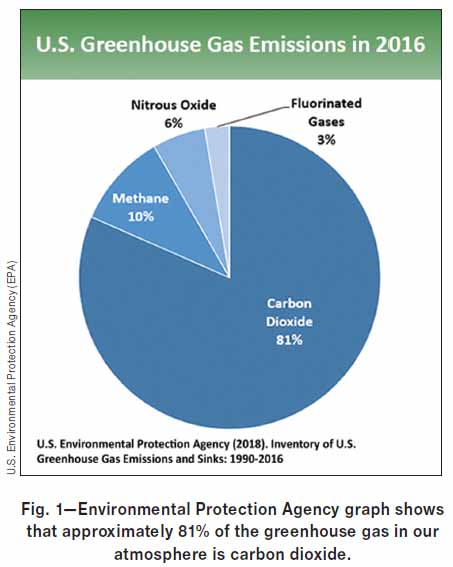
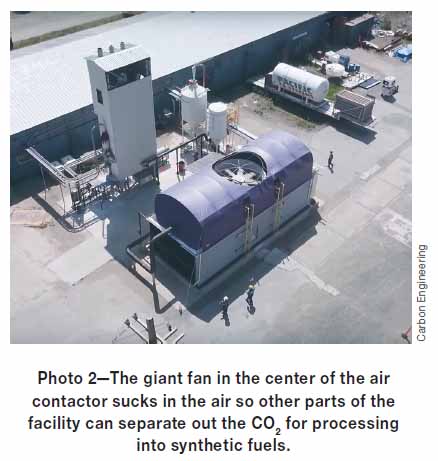
JD.com’s Totally Automated Warehouse in Shanghai
(Published November 2018 in TechDirections Magazine)
Worker Robots = 1000
Working People = 4
These Robots do the Jobs of 180 People
Is your career choice or current career going to be eliminated soon by automation and/or the artificial intelligence (AI) revolution? I raise this question not to scare you but to warn you that your career choice should include insight into how your selection will be affected by smart computer algorithms or artificial intelligent robotic systems in the foreseeable future.
We are still a long way from the type of “almost human” robots often depicted in science fiction movies. However, the loss of jobs to robots that still look like machines is picking up speed. The 1,000 robots in this JD.com automated warehouse in Shanghai, China, (Photo 1) are AI-controlled to pick, package, and then ship thousands of orders each day.
The robots are now doing the jobs that would normally be done by 180 workers. JD.com is a Chinese company that most of us in the U.S. have never heard of. They are the largest retail company in China and have over 300 million customers. They use automation
wherever possible to deliver products within 48 hours from the
time they were ordered. To accomplish this task they are now even using drones to get the products to their final destination.
This column fully describes what the robots do and it includes a full video tour of the facility. JD.com has just initiated a worldwide Tech Challenge that is similar in design to the Elon Musk's Hyperloop challenge. Links to the challenge are provided in the column.
. JD.com has launched a worldwide robotics challenge that is open to university teams.
The link to the challenge is just a click away














